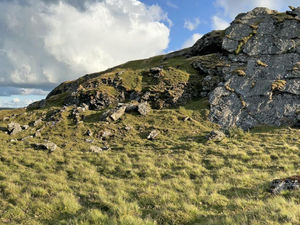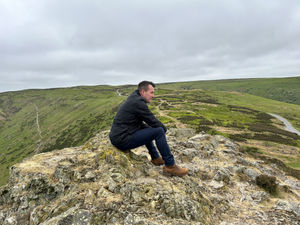Which roads are being gritted in Shropshire and by who
This was the week frost truly settled in Shropshire and the roads have become more treacherous - and the local authorities are making the rounds with their gritting machines.

Shropshire Council has shared a handy map showing which of the county's roads it is responsible for gritting with salt.
The map shows the roads salted by Shropshire Council (in light blue) as well as grit bins or salt piles (grey asterisks).
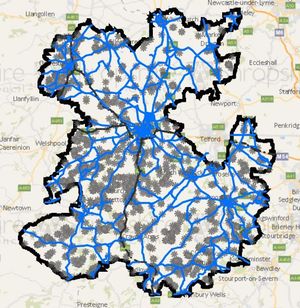
Shropshire Council said: "Every year, when the wintry weather arrives, together with our partners, we go out to grit the county’s roads, keeping them safe and accessible during spells of ice and snow to keep Shropshire moving in even the worst of the weather.
"There are hundreds of miles of roads in Shropshire and thousands of journeys to be made, so it’s important that we keep as many roads open as possible at all times. Throughout the year there’s a host of people working, sometimes through the night, to help you get where you need to be, even when temperatures plummet."
When snow or ice is predicted, the council "pre-salts" priority roads including all A and B roads, important access routes and major town centre shopping areas.
These roads make up what the council calls the "defined network", or 28 per cent of the county's total road network.
During prolonged periods of sub-zero temperatures, heavily used footways and cycle routes will also be gritted.
It's all carried out by drivers from the contractor Ringway and the council's fleet of 25 gritters (plus five reserve vehicles).
Northwest Shropshire:
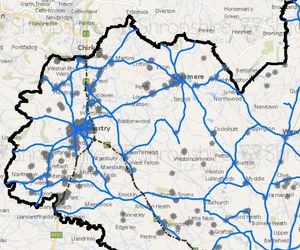
Northeast Shropshire:
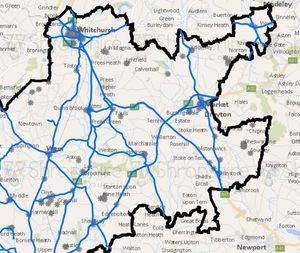
Shrewsbury:

South Shropshire:
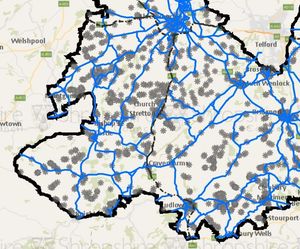
East Shropshire including Bridgnorth:
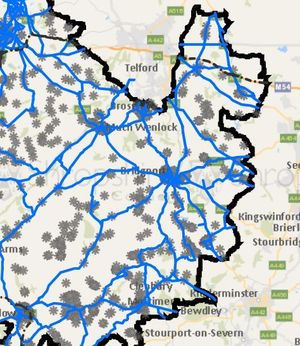
Meanwhile National Highways is responsible for gritting the M54/A5 as part of the national motorways network.
While Shropshire Council is responsible for A roads west of Wellington and east of Priorslee, Telford and the rural areas to its north are under the jurisdiction of Telford & Wrekin Council.
Telford & Wrekin Council treats a total of 438.86 kilometres of road in the borough.
Telford and Wrekin:
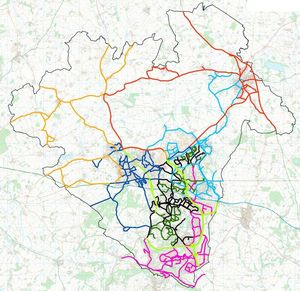
The council routinely grits:
Primary routes:
A and B roads
Roads serving fire, ambulance and police establishments
Main bus routes in the centres: Telford Town Centre, Dawley, Madeley, Newport, Oakengates, Wellington and Ironbridge
Access roads to transport interchanges
Secondary routes:
Other regular bus routes (The regular bus routes are defined as Monday to Friday routes with a minimum of one bus per hour during the main part of the day)
Feeder roads to schools (roads linking main salting routes to main school entrances)
Main access roads on industrial estates (Halesfield, Stafford Park, Hortonwood)
One access route to main villages/hamlets and minor sections of road for continuity
The council said: "Priority will always be given to primary routes before secondary routes. Grit bins may be provided at high risk sites such as steep hills and severe bends."
Councillor Lee Carter, Cabinet Member for Neighbourhood Services, Regeneration and the High Street (Labour) said: “Our gritting crews are on standby 24 hours a day from October right through to April to deal with whatever the winter weather throws at us.
“With freezing temperatures and snow forecast this weekend, they’ll be out across the borough at least once a day – and very often in the dead of the night – to do everything they can to keep our roads open and safe.
“The crews cover 400km of roads, bus routes and access roads for emergency services, schools, industrial estates and villages - a network agreed with the community and the equivalent of travelling from Telford to Glasgow!
“A huge thank you to them and to our army of 200 volunteer snow wardens who are also ready to grit smaller roads and footpaths in local estates and villages.”


